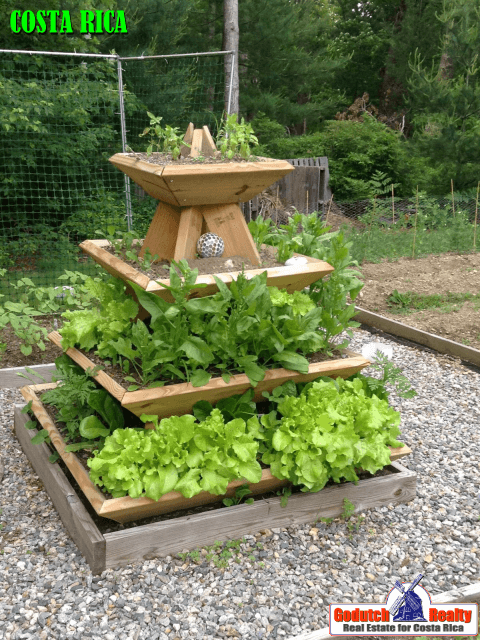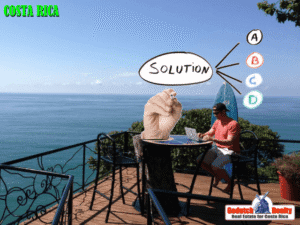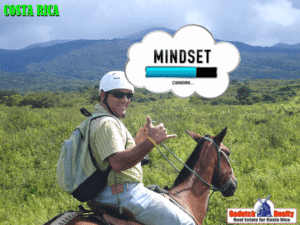Estimated Reading Time: 7 Minutes
It’s been more than 10 years since my wife and I bought a house in Costa Rica, thanks to the incredible GoDutch Realty team. Yet beneath the beauty lies a simple truth familiar to expats and locals alike: things don’t always go as planned. Whether it’s a leaky pipe, a broken part that takes months to import, or a power outage in the middle of a tropical storm, Costa Rica often demands creativity and improvisation.
This is where MacGyvering—the art of finding clever, makeshift solutions with whatever is at hand—becomes not just a skill, but a way of life. Why must MacGyvering be used in Costa Rica quite often? In this blog, I’d like to recount an experience I had recently that illustrates how you’ll find product availability in this country.
The term MacGyvering comes from the popular 1980s TV show MacGyver, whose main character could disarm bombs, fix engines, or build tools using everyday items like duct tape, chewing gum, or a paperclip. In Costa Rica, that same resourceful mindset is invaluable. While the country has modern conveniences, logistics can be unpredictable. Hardware stores may lack the exact part you need, deliveries can take weeks, and service technicians are sometimes in short supply. Waiting for the “right” solution can mean living without water, internet, or a functioning gate for days—or weeks. In such moments, improvisation isn’t just clever—it’s essential.

Just Lumber
My story is about buying lumber. It is not particularly important, taken at face value. But it exemplifies why “MacGyvering” is so prevalent. This is why you may sometimes wonder why Ticos are resigned to settling for the second-best solution. And, perhaps, why Costa Ricans can be counted among the world’s most patient people. That is probably the reason they’re good at MacGyvering.
If you were to buy wood for a project in North America, you’d most likely head to the lumberyard or big box building materials store. There you would find a wide selection of lumber in all sizes and lengths. Except for the EPA, there aren’t many big-box stores in Costa Rica. The local hardware stores or ferreterias will typically have even fewer choices. Some carry no lumber at all. Check on Google maps for depósitos de madera – lumber yards in your area.
The choice
At these stores, your selection will be much more limited. Some stores do carry Douglas fir, pine, redwood, or cedar, but since it is not commonly grown here. It is likely to be imported (probably from another country such as the U.S.). In any case, you will discover that the selection of pre-cut woods you are used to is going to be in shorter supply.
You’ll have fewer choices, and your purchase will be much more expensive here. Some stores do carry native pre-cut woods. Most of them will be hardwoods because that is what predominantly grows in Costa Rica. You should be prepared to pay more, unless you want to do a quick fix by MacGyvering.

Wooden planter
I promised my wife I would build her a wooden pyramid planter as a home for all our starter herbs and vegetables. Instead of heading to a big store or ferreteria, I decided to do some MacGyvering. My good friend and cabinetmaker said he would take me where he buys the wood for constructing his furniture and cabinets.
We got in his truck and drove about a kilometer. Then, we turned down a driveway and stopped in the midst of a complex of homes. There in the back of one was an ample supply of rough-sawn hardwood planks of all various odd shapes and sizes. This wood was cut directly at a mill, probably near the forest where the tree had been harvested. Many cut into rough 2” thick flat planks of all shapes and trucked to this vendor’s backyard.
Green wood
These were not dried woods and many were in varying dimensions of around 115” long by 22” to 27” wide. They contained knots, checks, cracks, and voids of unusable areas. The price was determined by rough measurement, “eyeballing” the unusable area, and subtracting the unusable area from the end price. I was told the wood was “similar but harder than Guanacaste.” I still don’t know exactly what I bought.
Transport
Using my planter plans and with my friend’s help, I bought two large planks for a bit under $200. These two pieces were so heavy and awkward that my friend decided to return with his trailer so we could transport them safely. He was afraid of damaging his truck. We are talking about two pieces of wood that could easily have weighed 700 pounds in total. We got help when loading it onto the trailer, tied it down, and returned to his shop.
At the shop
Once at the shop, it took four of us to unload each plank and place it on a workbench. We had to then examine each plank to determine the best way to get the most out of what I’d purchased. Then we ripped the planks into 2” x 6” boards. We did some cuts with a power handsaw and the rest on a table saw.
Then, we cut the boards into the sizes I needed for my planter. Furthermore, we individually planed one side of each piece to make it easier for me to handle, seal, and build. This process took three of us another 90 minutes.
All this cost me an additional $15. In sum, I now had $200 worth of custom-cut lumber to size.

My point
Here is the point I am trying to make. Costa Rica is a country with perhaps only 5 million souls. Smaller than many metro U.S. areas. In the world market, it is not large enough to exert much leverage or to choose from the products available for its merchants to stock or sell. It certainly isn’t large enough to carry and sell a wide selection of anything imported or not readily available, grown, or produced here.
It’s a matter of basic economics, of supply and demand. It is why many things you may be used to buying back home are unavailable in Costa Rica. Or, if they are available, they are very hard to find and relatively expensive when you do. It is also why Costa Ricans
- are used to finding or creating alternative solutions,
- substituting one product for another,
- adapting it and making it work for their application.
For many things, they’ve never seen or had them, so they don’t miss them, and/or they use or create something else to give them the result they are seeking.
Frustrated?
For expats, learning to MacGyver is part of integrating into the local rhythm. It encourages self-reliance and reduces frustration when things don’t go smoothly. Rather than waiting endlessly for imported parts or specialized help, people discover that a bit of ingenuity can restore comfort and peace of mind. Moreover, this hands-on approach often deepens one’s appreciation for the Costa Rican way of life—resourceful, patient, and unbothered by minor inconveniences.

The Right Mindset
MacGyvering in Costa Rica is not just about repairs—it’s about mindset. It teaches resilience, patience, and a sense of humor in the face of everyday challenges. It’s about focusing on solutions rather than problems and finding satisfaction in making things work, even if imperfectly. Those who embrace it find that Costa Rica rewards creativity and flexibility just as much as it rewards those seeking beauty and tranquility.
The Author
The author of this blog, Ticonuevo, is a US expat living in Costa Rica. He and his wife used GoDutch Realty to purchase a property in Costa Rica. In his blogs, Ticonuevo describes his own experience of taking the step of moving to Costa Rica and starting a new life.
Feel free to leave your comments on this blog, share this article on your social media, or request a Zoom meeting with us.























